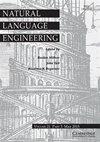新兴趋势:通用微调(gft)
IF 1.9
3区 计算机科学
Q3 COMPUTER SCIENCE, ARTIFICIAL INTELLIGENCE
引用次数: 2
摘要
摘要本文描述了gft(通用微调),这是一种用于深度网络的小语言,在ACL-2022教程中介绍。gft使得包括非程序员在内的广大用户都可以访问deep nets。使用R等统计软件包是许多领域的标准做法。不需要知道如何编程来拟合回归或分类模型,也不需要使用该模型来预测新的输入。在gft中,微调和推理类似于回归和分类中的拟合和预测。gft揭开深网的神秘面纱;没有人会认为类似回归的方法是“聪明的”本文章由计算机程序翻译,如有差异,请以英文原文为准。
Emerging trends: General fine-tuning (gft)
Abstract This paper describes gft (general fine-tuning), a little language for deep nets, introduced at an ACL-2022 tutorial. gft makes deep nets accessible to a broad audience including non-programmers. It is standard practice in many fields to use statistics packages such as R. One should not need to know how to program in order to fit a regression or classification model and to use the model to make predictions for novel inputs. With gft, fine-tuning and inference are similar to fit and predict in regression and classification. gft demystifies deep nets; no one would suggest that regression-like methods are “intelligent.”
求助全文
通过发布文献求助,成功后即可免费获取论文全文。
去求助
来源期刊

Natural Language Engineering
COMPUTER SCIENCE, ARTIFICIAL INTELLIGENCE-
CiteScore
5.90
自引率
12.00%
发文量
60
审稿时长
>12 weeks
期刊介绍:
Natural Language Engineering meets the needs of professionals and researchers working in all areas of computerised language processing, whether from the perspective of theoretical or descriptive linguistics, lexicology, computer science or engineering. Its aim is to bridge the gap between traditional computational linguistics research and the implementation of practical applications with potential real-world use. As well as publishing research articles on a broad range of topics - from text analysis, machine translation, information retrieval and speech analysis and generation to integrated systems and multi modal interfaces - it also publishes special issues on specific areas and technologies within these topics, an industry watch column and book reviews.
 求助内容:
求助内容: 应助结果提醒方式:
应助结果提醒方式:


